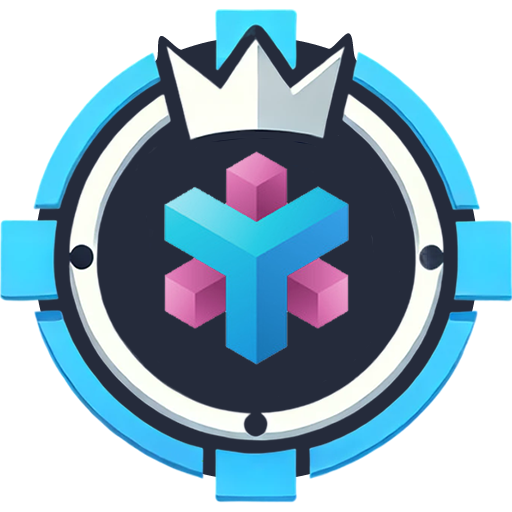How AI Powers Dynamic Content in Cloud Gaming

AI-Powered Cloud Gaming Delivering Dynamic Content and Low-Latency Experiences The gaming industry is evolving at a rapid pace and developers are constantly looking for ways...
⏱️ Estimated reading time: 5 min
Latest News
AI-Powered Cloud Gaming Delivering Dynamic Content and Low-Latency Experiences
The gaming industry is evolving at a rapid pace and developers are constantly looking for ways to create more immersive and responsive experiences. Notably one of the most exciting advancements is the use of artificial intelligence AI to generate dynamic game content in the cloud thereby enabling low-latency gameplay across devices. As a result this technology is transforming how games are designed delivered and experienced allowing players to engage with worlds that adapt in real time to their actions.
Understanding AI in Cloud-Based Gaming
Traditionally game content such as levels environments NPC behavior and quests are pre-designed and fixed. Consequently this approach limits flexibility and personalization. However cloud-based AI introduces procedural generation and real-time adaptation thereby allowing games to.
- Dynamically Generate Content: AI algorithms can create game elements like levels environments and quests algorithmically enabling infinite variations and reducing the need for manual design.
- Adapt to Player Behavior: Games can respond in real-time to player actions adjusting narratives and challenges to enhance engagement and replayability .
- Enhance NPC Interactions: AI-driven NPCs can exhibit more complex behaviors and dialogues providing a more immersive and personalized gaming experience .
- Optimize Game Performance: Cloud-based AI can offload computational tasks improving game performance and enabling more complex AI behaviors without taxing local hardware .Cubix
- Tailor challenges based on player skill.
- Dynamically modify environments to enhance replayability.
- Adjust narratives and objectives depending on player choices.
By leveraging powerful cloud servers AI can process complex algorithms and generate content on the fly thereby preventing the player’s device from being overloaded. As a result this ensures low-latency seamless gameplay even in high-fidelity interactive environments.
Procedural Content Generation PCG
Furthermore AI algorithms can automatically generate game environments terrains items or even quests. Unlike static maps procedural content generation PCG allows each player to experience a unique game world thereby enhancing engagement and replay value.
Adaptive NPC Behavior
Additionally AI enables non-player characters NPCs to learn and respond dynamically to player actions. Rather than repeating scripted patterns NPCs can:
- Adjust difficulty based on player performance.
- Change strategies in combat or negotiation scenarios.
- Interact with the environment in unpredictable ways creating a more lifelike experience.
Real-Time Narrative Generation
Moreover AI-driven storytelling can modify plotlines according to player decisions thereby creating a branching narrative that feels organic. As a result players can influence the story making each session personally meaningful and engaging.
- Example: AI monitors choices then generates dialogue missions and consequences that reflect player behavior giving a sense of ownership over the story.
Cloud Streaming and Low-Latency Optimization
- Minimal lag even on low-end devices.
- Instant adaptation of environments and gameplay mechanics.
- Consistent high-quality visuals and physics simulations.
By offloading computation to the cloud developers can build more complex AI systems without worrying about hardware limitations on client devices.

Enhanced Player Engagement
Games that adapt in real time feel more responsive and alive. Players are less likely to become bored and replayability increases because no two sessions are identical.
Personalized Difficulty and Experience
In addition AI can monitor skill levels and adjust challenges accordingly thereby keeping players in a state of flow challenged but not overwhelmed. Consequently this personalized approach improves satisfaction and retention.
Reduced Development Bottlenecks
Additionally AI can generate content automatically, thereby reducing the time and resources needed for manual level design or asset creation. As a result developers can focus on creativity and game mechanics instead of repetitive tasks.
Scalability Across Platforms
Furthermore cloud-based AI ensures consistent gameplay across consoles PCs and mobile devices. Consequently players can experience dynamic content without worrying about hardware constraints.
Network Reliability and Latency
While cloud servers process content efficiently network instability can affect gameplay. Developers must optimize data streaming to maintain low latency and smooth interactions.
Content Quality Control
However AI-generated environments and narratives may sometimes produce unexpected or low-quality outcomes. Therefore human oversight is essential to ensure coherence balance and entertainment value.
Ethical and Creative Considerations
- Unfair difficulty spikes or unfair advantages.
- Culturally insensitive or inappropriate content if AI is not carefully trained.
- Issues with player consent when AI adapts content unpredictably.
Balancing AI creativity with human oversight ensures enjoyable and safe experiences.
Resource-Intensive Infrastructure
Additionally running real-time AI in the cloud requires high-performance servers GPUs and storage which can lead to increased operational costs. Consequently efficient resource management is critical for commercial scalability.
Real-World Examples
- Ubisoft’s Ghost AI Research: Explores NPCs that learn from player behavior to improve combat realism.
- Minecraft and Procedural Worlds: AI algorithms create endless landscapes and challenges that evolve with gameplay.
- Google Stadia and Cloud Streaming Platforms: Test low-latency AI-assisted gaming with dynamic real-time content updates.
These examples illustrate the potential of combining AI cloud computing and procedural generation to create more immersive gaming worlds.
The Future of AI-Generated Cloud Gaming
- Fully Adaptive Game Worlds: Entire game environments may evolve in real time responding not only to individual players but to global player communities.
- AI-Driven Cooperative Gameplay: AI agents could facilitate teamwork provide dynamic challenges or assist in complex missions.
- Integration with VR/AR: Real-time AI content will enhance virtual and augmented reality experiences creating highly personalized immersive worlds.
- Data-Driven Insights: AI can collect and analyze player behavior to refine games continuously improving engagement and retention.
Related Posts

Luminal’s $5.3M Boost: Revolutionizing GPU Code
Luminal Secures $5.3M to Advance GPU Code Framework Luminal has successfully raised $5.3 million in...
November 17, 2025

AI Takes the Field Oakland Ballers’ Bold Experiment
Oakland Ballers Bet on AI A Risky Play? The Oakland Ballers a team in the...
September 22, 2025

Hike Shuts Down Amidst Gaming Regulations in India
Hike Shuts Down Amidst Gaming Regulations in India Hike, once a prominent unicorn in India’s...
September 14, 2025











Leave a Reply